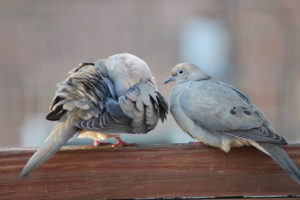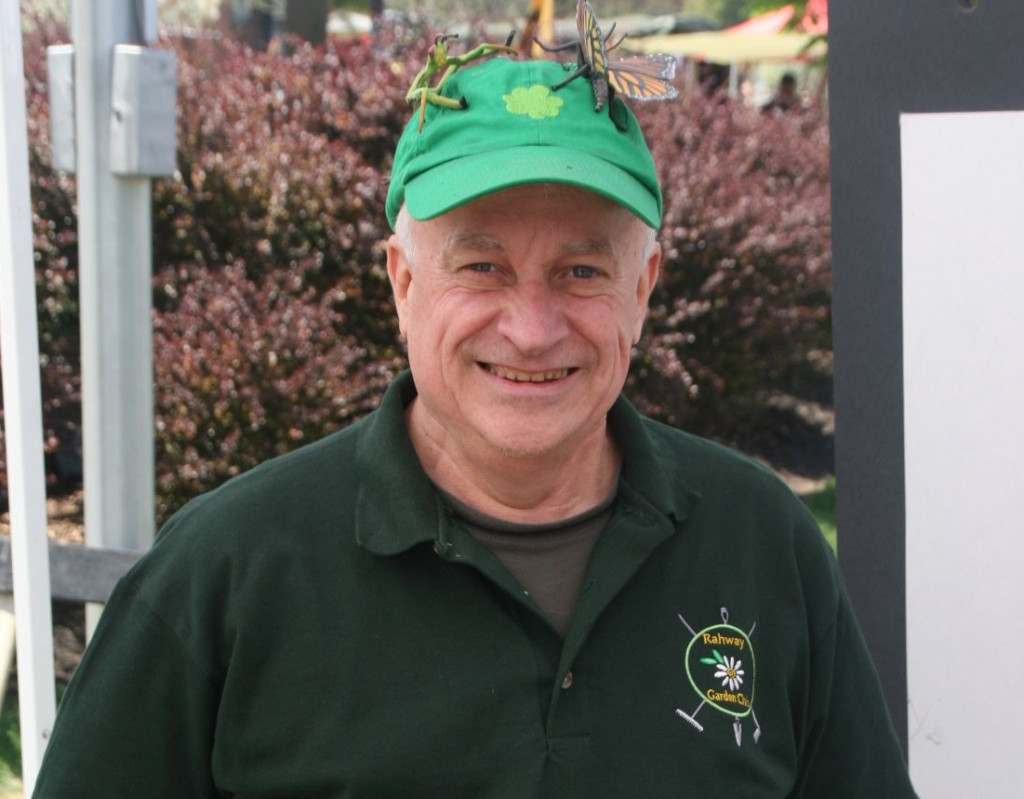 Mourning doves are the most successful wild dove in North and Central America. They feed on a wide assortment of seeds an d f ield w aste gra in. It is their ability t o eat a vast variet y of weed seeds which makes them a valuable ally of farmers and gardeners.
Mourning doves are the most successful wild dove in North and Central America. They feed on a wide assortment of seeds an d f ield w aste gra in. It is their ability t o eat a vast variet y of weed seeds which makes them a valuable ally of farmers and gardeners.
Due to modern day tracking devices scientist now know that mourning doves mate for life; an old wives tale proven true. If a dove does lose its mate they will eventually find a new one.
A t mating time the pair engag es in a n elabor ate ma tin g r it ual wi th song, (c oo-coo ) feather displays and dance. The male then builds a l oos e nest five to twenty five feet above the ground o ut of tw igs, grass, we eds and pine needles . The nest is so loo se that y ou can see though it from below.
The female lay s t wo white e ggs which bot h parents incubate for 14 to 15 days. The male does the dayt ime shift an d the female incubates at night. Since the pair look very much alike most observers assume it is the same bird. The switch happ ens quickly to keep the e ggs warm an d protected.”
Pigeons and doves produce a very nutritious food for their young called ‘pigeons milk’. The parent opens it mouth wide and the young eat the mixture from inside.
Once hatched the squab (young doves) leave the nest after only twelve to fourteen days. Both parents teach the fledgling for a few days before starting the next clutch. The pair can give birth to five clutches ev ery year, often reusi ng the same nest.
Sadly the young mourning doves have a very high mortality rate of fifty to sixty percent. Hawks and other predators, human hunting, and the intro duct ion of cats to our env ironment by Europeans takes a heavy toll on these indigenous doves. If young birds live though the first year they can live to be four or five years old.
If you are lucky enough to have a nesting pair of doves on your pro perty try not to disturbed them. M ournin g doves will quickl y a bandon their nest and even their nestlings if they feel endangered. Part one: ‘Mourning Doves, Backyard Bird Feeding’ was published in Our Town, December 2016
Happy Gardening,
James

(above) President of The Rahway Garden Club, James Keane has been researching and answering garden questions since 1995. Visit ‘Keane Gardener’ blog at: keanegardener.blogspot.com
